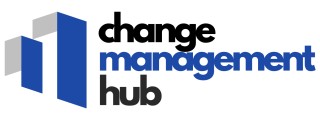-large-teaser.webp)
Understanding Procurement Process Redesign
Redefining Procurement as a Business Imperative
The landscape of procurement is evolving at a rapid pace, leading organizations to reassess and redesign their procurement processes to enhance operational efficiency and cost savings. Procurement is not just about obtaining goods and services but is indeed the core of business operations. Every purchase order and every interaction with suppliers contribute significantly to the overall performance and profitability of a company.
The pressure to improve procurement strategies is immense, and it encompasses streamlining procurement activities and optimizing supplier relationships. As businesses strive for improved efficiency and cost management, procurement teams play a crucial role in reshaping processes. The procurement process redesign is often initiated to address inefficiencies and to modernize procurement activities in line with today's digital transformations.
Process Improvement and Procurement Efficiency
Organizations aiming to improve procurement focus heavily on process improvement. There are several intertwined processes within procurement, such as procure to pay cycles, supplier management, and shared services. Streamlining these can significantly boost procurement efficiency.
Process improvement involves evaluating current procurement practices, researching cost-effective measures, and implementing automation to reduce manual interventions and eliminate redundancies. This not only saves time but enhances the overall performance of procurement teams, enabling them to focus on more strategic activities.
The process of redesigning procurement encompasses evaluating the supply chain and integrating new services that align with business goals. Procurement transformation is especially crucial for maintaining supplier performance and collaboration, which ultimately contributes to long-term efficiencies and cost savings.
For more insights into strategic approaches that align with enhancing community engagement in achieving business goals, read more here.
Key Challenges in Implementing Change
Overcoming Hurdles in Procurement Process Transformation
Implementing change in procurement processes often presents a set of challenges that organizations need to navigate effectively. These challenges can vary in scope and impact, but understanding them is key to enhancing procurement efficiency and achieving long-term cost savings.Resistance to Change
One of the most common challenges is resistance from procurement teams and stakeholders who may be accustomed to existing processes. This resistance can stem from a fear of the unknown or a perception that new processes might disrupt familiar workflow. Encouragingly, organizations can mitigate resistance through clear communication about the benefits of streamlined procurement and how it ultimately improves efficiency.Inefficient Supplier Relationships
Supplier management and the quality of supplier relationships are also crucial factors. Aligning suppliers with new procurement strategies may require redefining service agreements and ensuring that they understand the importance of process improvement. Establishing strong collaborations can enhance supplier performance and reduce procurement cycle times, a critical aspect of successful procurement transformation.Data and Technology Integration
Integrating new technologies into procurement can be daunting, especially when dealing with legacy systems. Organizations often struggle with data management issues and the need for process automation to improve procurement benchmarks. Investing in supply chain technologies and shared services can facilitate a smoother transition, reducing time taken for procure-to-pay processes. To gain better insight into the intricacies of navigating technology in procurement, you can explore more here: navigating technology procurement.Cost Management and Optimization
Cost considerations are always at the forefront of procurement improvements. Implementing changes that initially require investment can be a hard sell without demonstrating clear return on investment and procurement efficiency. Organizations need to focus on aligning new processes with strategic goals to achieve cost savings and improve procurement performance over time. By addressing these key challenges, businesses can enhance procurement strategies, improve goods and services acquisition, and foster an environment of continuous process improvement.Strategies for Successful Change Management
Effective Strategies for Driving Change
Implementing a successful procurement transformation requires more than recognizing the need for change—it demands strategic approaches tailored to your organization's specific needs. To enhance procurement process efficiency, organizations must consider:- Comprehensive Analysis and Planning: Assess your current procurement strategies and identify areas for improvement. Detailed analysis paves the way for effective change, aligning with business objectives and ensuring procurement processes are optimized for performance and cost savings.
- Developing a Clear Vision: Create a guiding vision that outlines the desired state of procurement. This not only includes improved supplier relationships but also increased procurement efficiency and time savings, enabling procurement teams to focus on strategic tasks rather than transactional activities.
- Engaging Procurement Teams: The success of new initiatives largely depends on the people responsible for their implementation. Equip procurement teams with training and resources to understand and adapt to the new processes, thereby improving buy-in and reducing resistance.
- Leveraging Technology: Integrating technological solutions, such as automation and data analytics, can streamline procurement activities, leading to more efficient procurement cycles and cost reductions. These technologies also aid in managing supplier performance and tracking purchase orders efficiently.
- Implementing Flexible Procedures: Establish adaptable processes that can evolve with business needs and supplier dynamics. Shared services models and technology can create agile procurement processes, allowing better adaptation to changes in the supply chain.
Role of Technology in Procurement Transformation
Integrating Technology for Maximum Impact
In today's fast-paced business environment, technology has become an essential ally in transforming procurement processes. The integration of advanced tools and systems can significantly enhance efficiency, reduce costs, and improve supplier relationships as part of the overall procurement strategy. Technology can automate tedious procurement activities, such as purchase order creation and supplier invoicing. This automation not only saves time but also minimizes human errors, contributing to improved procurement efficiency. It can also streamline procurement processes by providing real-time data and insights into supplier performance, helping procurement teams make better informed decisions. Utilizing cutting-edge technology in procurement allows for better data management and process improvement. The use of data analytics provides invaluable insights into key areas such as supplier performance and cost savings opportunities. Choosing the right tools and services can help procurement teams align with business goals, ensuring that procurement activities are not just streamlined but also contribute meaningfully to the organization's long-term objectives. Shared services models can also benefit greatly from technological advancements. With centralized procurement systems, organizations can improve procurement processes across the supply chain, ensuring a more seamless procure-to-pay cycle. Moreover, process automation can facilitate better supplier engagement, resulting in stronger supplier relationships and enhanced service delivery. In summary, the role of technology in procurement transformation is pivotal. By leveraging the appropriate digital solutions, businesses can enhance procurement efficiency, drive process improvement, achieve significant cost savings, and ultimately improve both short-term performance and long-term strategic outcomes. As organizations take steps to rethink their procurement processes, the integration of technology remains a key driver for success.Stakeholder Engagement and Communication
Engaging Stakeholders for Seamless Procurement Transformation
In the journey of procurement process redesign, stakeholder engagement and communication play a pivotal role. Ensuring that all parties involved are on the same page can significantly enhance the efficiency and effectiveness of the change management process. Here’s how organizations can achieve this:
- Identify Key Stakeholders: Start by identifying all the stakeholders involved in the procurement cycle. This includes procurement teams, suppliers, and shared services teams. Understanding their roles and expectations is crucial for aligning goals and strategies.
- Transparent Communication: Open and transparent communication is essential. Regular updates about the procurement process changes, timelines, and expected outcomes help in managing expectations and reducing resistance.
- Collaborative Approach: Engage stakeholders in the redesign process. By involving them in discussions and decision-making, you can foster a sense of ownership and commitment to the new processes.
- Training and Support: Provide necessary training and support to stakeholders to help them adapt to new procurement processes. This includes educating them about new technologies and automation tools that will be implemented.
- Feedback Mechanism: Establish a robust feedback mechanism to gather insights from stakeholders. This will help in identifying areas of improvement and ensuring continuous process improvement.
Effective stakeholder engagement not only enhances procurement efficiency but also strengthens supplier relationships and improves supplier performance. By focusing on clear communication and collaboration, organizations can streamline procurement activities and achieve long-term cost savings.
Measuring Success and Continuous Improvement
Evaluating Success Metrics and Pursuing Ongoing Enhancement
In any successful procurement process redesign, measuring success is crucial. Organizations must establish clear metrics to evaluate process improvements and the overall effectiveness of their procurement strategy. Consider incorporating quantitative metrics such as cost savings, efficiency improvements, and supplier performance.- Cost Savings: Track cost reductions obtained through streamlined procurement activities. Evaluate how modifications in the procurement cycle contribute to lower purchase prices and long-term savings.
- Efficiency: Analyze how procurement efficiency initiatives have impacted the time it takes to complete a purchase order. The reduction in processing time can be a significant indicator of improved procurement processes.
- Supplier Performance: Monitor key aspects like supplier relationships and supplier performance, looking for enhancements in service delivery and quality of goods and services.













